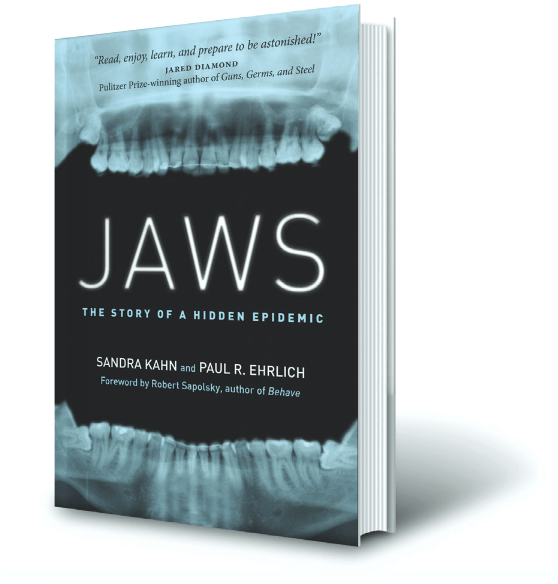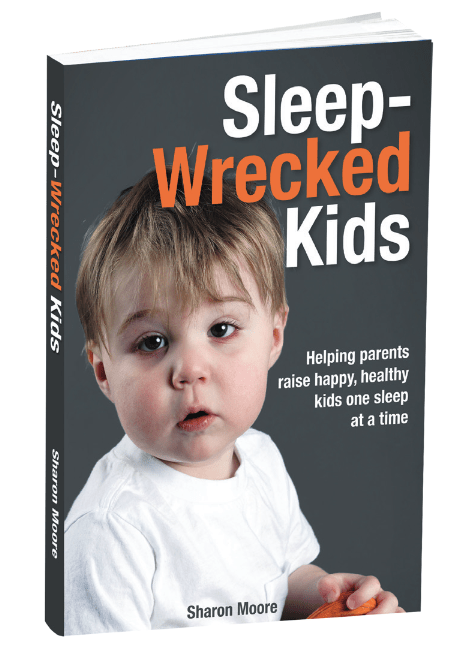by Pat Mc Bride, MA, RDA, CCSH
We all look at children’s faces every day in our clinical practices. One kid after another, year after year, they all start to look pretty much the same, don’t they? And yet, if today’s faces are compared to those of past generations there is no escaping the visual evidence that they are in fact vastly different and in very substantial ways. The migration of the face down and back, the open mouth posture and unbalanced profiles we see now sound the alarm that something is going wrong with children’s craniofacial growth and development.
Jaws: The Story of a Hidden Epidemic
 Jaws: The Story of a Hidden Epidemic is must read book for everyone. It belongs in your waiting room, if only to bring awareness and help facilitate sensitive conversations about a child’s growth, development and aesthetic appearance with the families we serve. Tracking the silent epidemic in western civilization which is escalating negative growth and function of the face and jaw, it’s a book about everyone, especially the most precious resource on the planet, our children. Sandra Kahn, a pioneering orthodontist, and evolutionist Paul Ehrlich track with scientific, clinical, and anecdotal data the decline in development of our jaws revealing the current negative changes in our faces. No, you will not find pages full of citations for refereed literature in this book, but common sense should be your guide when reading. The consequences of decline include jaws that are getting smaller, crowded/crooked teeth which create aesthetic issues in our modern society as well as difficulty in breathing. One interesting notion brought to light has to do with how and why current clinical practices in orthodontics as well as dietary, biological, and cultural changes may be contributing to this negative growth and function trend. The current generation of young people has one thing in common that no other generation before them: access to orthodontic therapy. Once considered a therapy of the wealthy and privileged, today braces are viewed as a customary rite of passage. Dentists and orthodontists have been charged with the Herculean task of identifying and screening for airway and sleep disorders, which makes the information in this book extremely helpful. Jaws: The Story of a Hidden Epidemic may just change your mind about a few long-held notions concerning orthodontic practices. What practitioners either do or do not do to protect and enhance a child’s airway can impact a child’s ability to develop to their full potential.
Jaws: The Story of a Hidden Epidemic is must read book for everyone. It belongs in your waiting room, if only to bring awareness and help facilitate sensitive conversations about a child’s growth, development and aesthetic appearance with the families we serve. Tracking the silent epidemic in western civilization which is escalating negative growth and function of the face and jaw, it’s a book about everyone, especially the most precious resource on the planet, our children. Sandra Kahn, a pioneering orthodontist, and evolutionist Paul Ehrlich track with scientific, clinical, and anecdotal data the decline in development of our jaws revealing the current negative changes in our faces. No, you will not find pages full of citations for refereed literature in this book, but common sense should be your guide when reading. The consequences of decline include jaws that are getting smaller, crowded/crooked teeth which create aesthetic issues in our modern society as well as difficulty in breathing. One interesting notion brought to light has to do with how and why current clinical practices in orthodontics as well as dietary, biological, and cultural changes may be contributing to this negative growth and function trend. The current generation of young people has one thing in common that no other generation before them: access to orthodontic therapy. Once considered a therapy of the wealthy and privileged, today braces are viewed as a customary rite of passage. Dentists and orthodontists have been charged with the Herculean task of identifying and screening for airway and sleep disorders, which makes the information in this book extremely helpful. Jaws: The Story of a Hidden Epidemic may just change your mind about a few long-held notions concerning orthodontic practices. What practitioners either do or do not do to protect and enhance a child’s airway can impact a child’s ability to develop to their full potential.
With grace and poignancy, Kahn and Ehrlich stress that the current rapid negative shift in oral evolution of the face, jaws and health risks posed by possibly obstructed airways must be addressed. To aid parents, teachers, physicians, dentists and clinicians alike, they propose many simple adjustments that can alleviate this growing crisis and introduce alternatives to standard orthodontics that promote proper facial balance, growth, function, correct oral rest posture, and ultimately protect the fragile airway health of all patients. Jaws will change your life. Read it and pass it along to anyone and everyone you care about. You will help save their life too.
Sleep Wrecked Kids
As a veteran mother who survived raising one of the worst “sleepers” ever, thirty years later, I eagerly picked up this book and began to devour its contents. Sleep Wrecked Kids has come along right in time to literally save the day with an excellent book on sleep practices for children. There isn’t anyone who hasn’t shuddered at the screaming kid, swinging from the rafters of our waiting-rooms who hasn’t noted that “that kid must have missed his nap!”
Working from the staggering statistic that 25%- 40% of all children suffer from some kind of sleep disturbance, Sharon Moore deftly identifies the myriad of problems that physically, socially, psychologically and developmentally negatively impacting children’s sleep. She connects the dots between disparate issues starting from ground up with the simple question, “What is good sleep”? Not surprisingly, most people don’t know, and to be honest, when the kids are all over the map at the end of a long day, whatever works to get them to sleep is what most people do.

Moore’s insight and positive practical solutions to improve sleep are invaluable. Dentists and orthodontists can easily refer to and adapt her behavior and sleep charts for assessing a child’s sleep during screening and exams. Asking the right questions may just change a life. Her introduction of medical interventions and specialists will help providers locate their own “team” of community referrals to address the children in your practice. The emphasis on children’s airway, oral rest posture, myofunctional therapy, craniofacial development and overall health outcomes could not come at a better time with so many children suffering from sleep and breathing disorders and not enough providers who are trained to help them.
Finally, understand that kids who don’t sleep well have parents who don’t sleep well because of them. The ‘taking care of adult’ sleep tips and tools are for everyone. This book belongs on the waiting room table and given to every new mommy-to-be. Give them a great start!
Plan ahead – this book will go missing. Buy extras. It’s just that good.